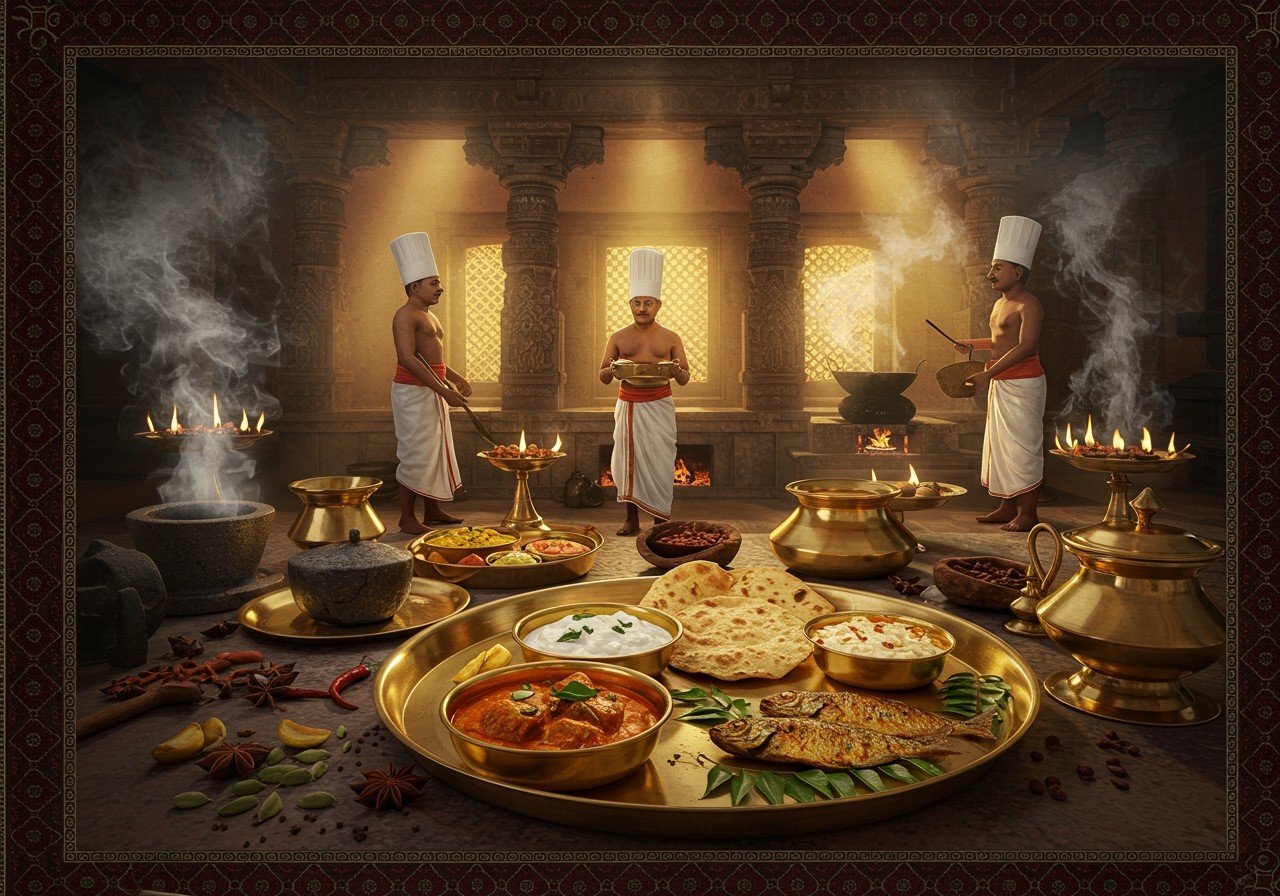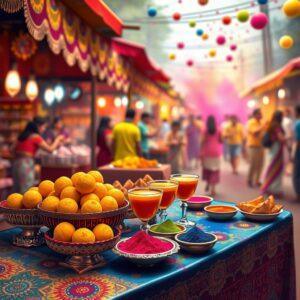
Madurai, renowned for its temples and historical significance, holds a rich culinary heritage shaped by the Nayak Dynasty (1529-1736). This article delves into the unique food culture developed during their reign, exploring the flavors, ingredients, and culinary practices that have endured over the centuries.
The Nayak Dynasty’s Culinary Influence
The Nayak Dynasty, originating from the Balija warrior clans of Andhra Pradesh, ruled Madurai with a blend of Telugu, Tamil, and other South Indian traditions. Their patronage of arts, culture, and cuisine significantly impacted local food practices. Tirumalai Nayak, a prominent ruler, strengthened the dynasty’s power and solidified Madurai as the capital. Understanding this historical context is key to appreciating Madurai’s unique culinary identity. The Nayaks, transitioning from military governors to independent rulers after the Battle of Talikota, emerged during the Kakatiya dynasty and Vijayanagara Empire period.
Chettinad Cuisine’s Impact
Chettinad cuisine, known for its bold flavors and aromatic spices, plays a vital role in Madurai’s culinary history. The Nayak Dynasty’s influence, through trade and cultural exchange, enriched local food with dishes like Chettinad chicken curry, pepper prawns, and masala vadas. The use of freshly ground spices, sun-dried meats, and seafood, combined with traditional cooking techniques, showcases the culinary sophistication of the era.
Traditional Madurai Sweets
Madurai’s sweets reflect the city’s rich culinary heritage, influenced by the Nayak Dynasty. Jigarthanda, a refreshing cold dessert with milk, almond gum, and ice cream, stands out. The soft Murukku, another popular sweet, exemplifies the blend of local and royal culinary practices. These sweets, prepared with age-old recipes passed down through generations, offer a taste of history.
Nayak Influence on Local Cuisine
The Nayaks’ preference for rich and elaborate meals integrated various culinary techniques and ingredients into the local cuisine. Tamarind, coconut milk, and a variety of spices became prominent. Dishes like Kari Dosai (meat dosa) and Meen Kuzhambu (fish curry) demonstrate the fusion of royal tastes with traditional Tamil cooking. This influence continues to shape contemporary Madurai cuisine.
Culinary Traditions and Rituals
Food in Madurai transcends mere sustenance, intertwining with rituals and cultural traditions. During the Nayak era, specific foods were prepared for festivals and religious ceremonies. Pongal during harvest festivals and elaborate temple feasts are prime examples. These traditions continue to define the city’s culinary identity.
A Culinary Legacy Continues
Madurai’s culinary heritage, shaped by the Nayak Dynasty, thrives in modern times. The fusion of flavors, spices, and traditional practices remains a cherished part of the city’s identity. From street food stalls to upscale restaurants, the Nayaks’ influence is evident. Experiencing Madurai’s vibrant food scene is a journey through time, tasting the preserved history and traditions. Whether enjoying a Chettinad dish or savoring Jigarthanda, the Nayak Dynasty’s legacy lives on, making Madurai a culinary treasure.
FAQs: Madurai’s Nayak Dynasty Food
What distinguishes Madurai’s Nayak Dynasty food? It’s a unique blend of South Indian flavors with influences from the Nayak rulers, creating a diverse culinary experience.
How did the Nayak Dynasty shape local cuisine? They introduced new ingredients, cooking methods, and blended their traditions with local flavors.
Can you name some renowned Nayak Dynasty dishes? Biryani, Kola Urundai (meatballs), and various spicy curries are among the famous dishes.
Is there a connection between Chettinad and Nayak Dynasty food? Chettinad cuisine, while distinct, shares similarities with Nayak Dynasty food, especially in spice use and cooking techniques.
What are some traditional Madurai sweets? Jangiri, Gulab Jamun, and Laddu are popular choices, often enjoyed during festivals.
Are Nayak Dynasty recipes still prevalent today? Yes, many recipes remain popular among locals and visitors in Madurai.
Where can I find Nayak Dynasty food online? Several online platforms offer these dishes and traditional Madurai sweets, including those specializing in authentic ritual items.
Authentic Ritual Items for Traditional South Indian Cooking
Poojn.in, India’s leading cultural goods store, offers products connecting you with Madurai’s culinary heritage:
- Ashan (Traditional Woven Mats): Create an authentic South Indian dining setting, reminiscent of the Nayak Dynasty, with our handcrafted Ashan mats. These mats offer a traditional and comfortable way to enjoy meals, just as it was done centuries ago.
- Brass Utensils: Preserve the authentic taste and ritual significance of Madurai cuisine with our collection of brass utensils, including the Madhuporker Bati, ideal for storing honey and sweet preparations.
- Pure Green Mung Dal: A staple in South Indian cooking, our Green Mung Dal is perfect for traditional Madurai dishes like Paruppu Urundai and temple-style preparations. Buy Green Mung Dal.
Explore our full range of traditional cooking and dining items at Poojn.in to experience the authentic flavors and customs of Madurai.
Explore related articles on South Indian culture and traditions:


